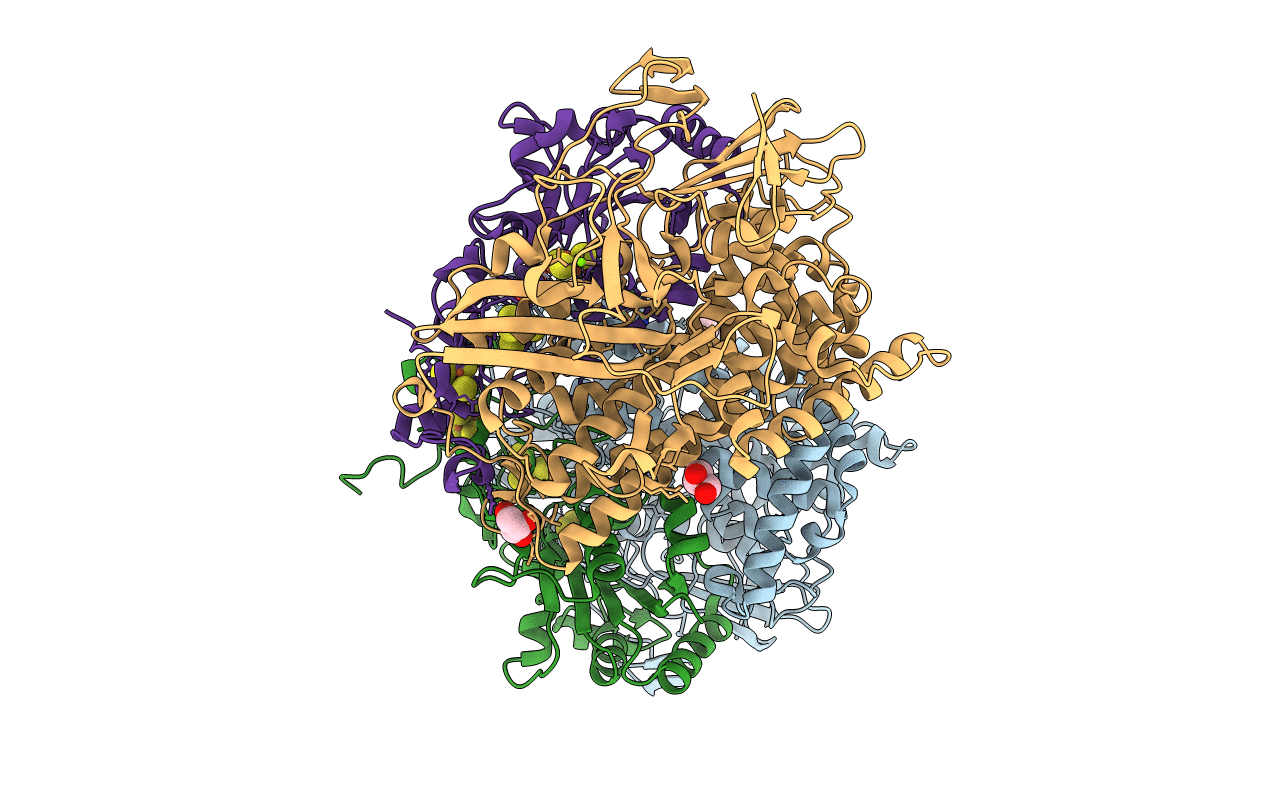
Deposition Date
2017-07-27
Release Date
2017-08-16
Last Version Date
2023-11-22
Entry Detail
PDB ID:
5Y34
Keywords:
Title:
Membrane-bound respiratory [NiFe]-hydrogenase from Hydrogenovibrio marinus in a ferricyanide-oxidized condition
Biological Source:
Source Organism:
Hydrogenovibrio marinus (Taxon ID: 28885)
Method Details:
Experimental Method:
Resolution:
1.32 Å
R-Value Free:
0.15
R-Value Work:
0.13
R-Value Observed:
0.13
Space Group:
P 1 21 1


